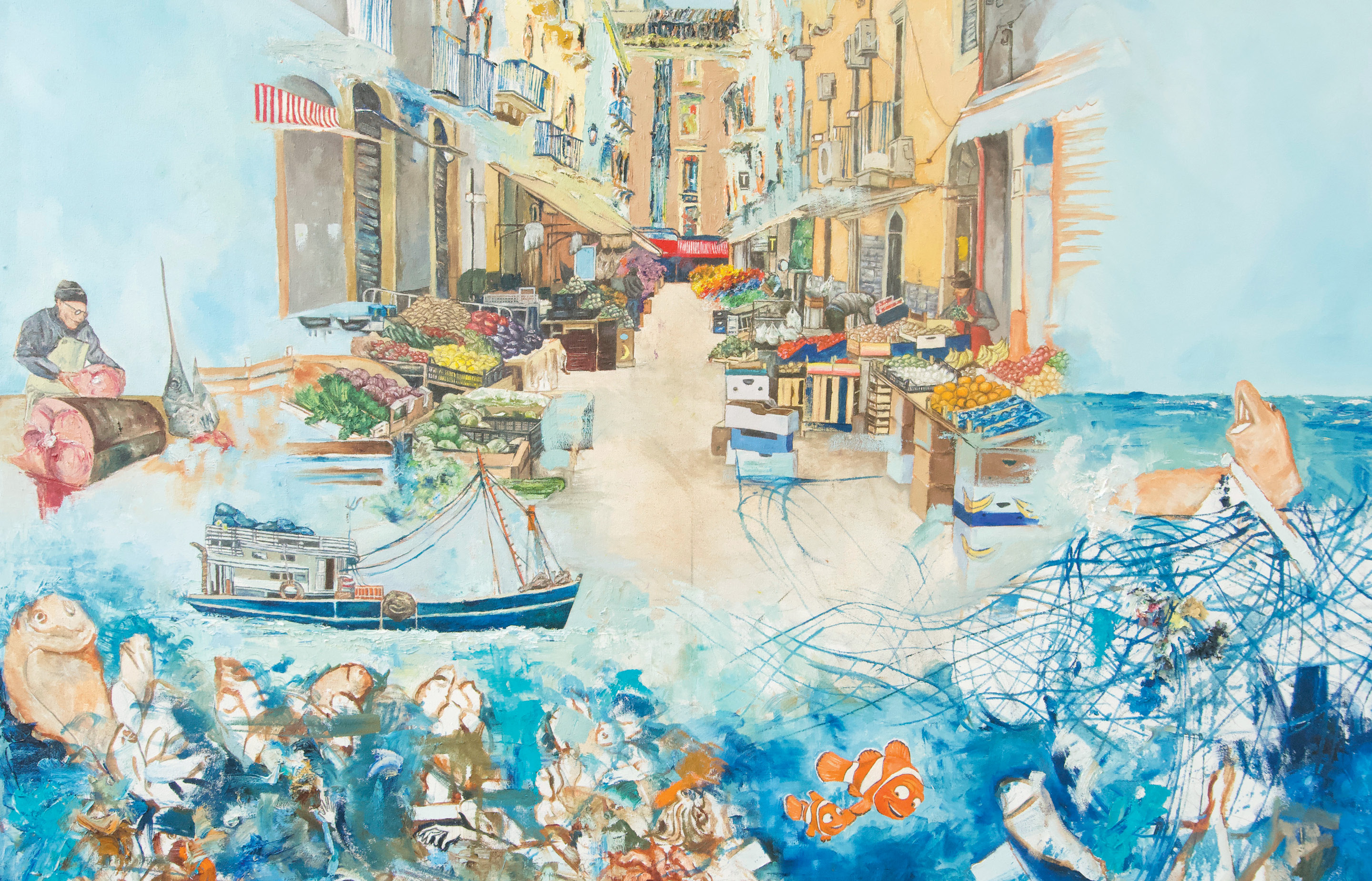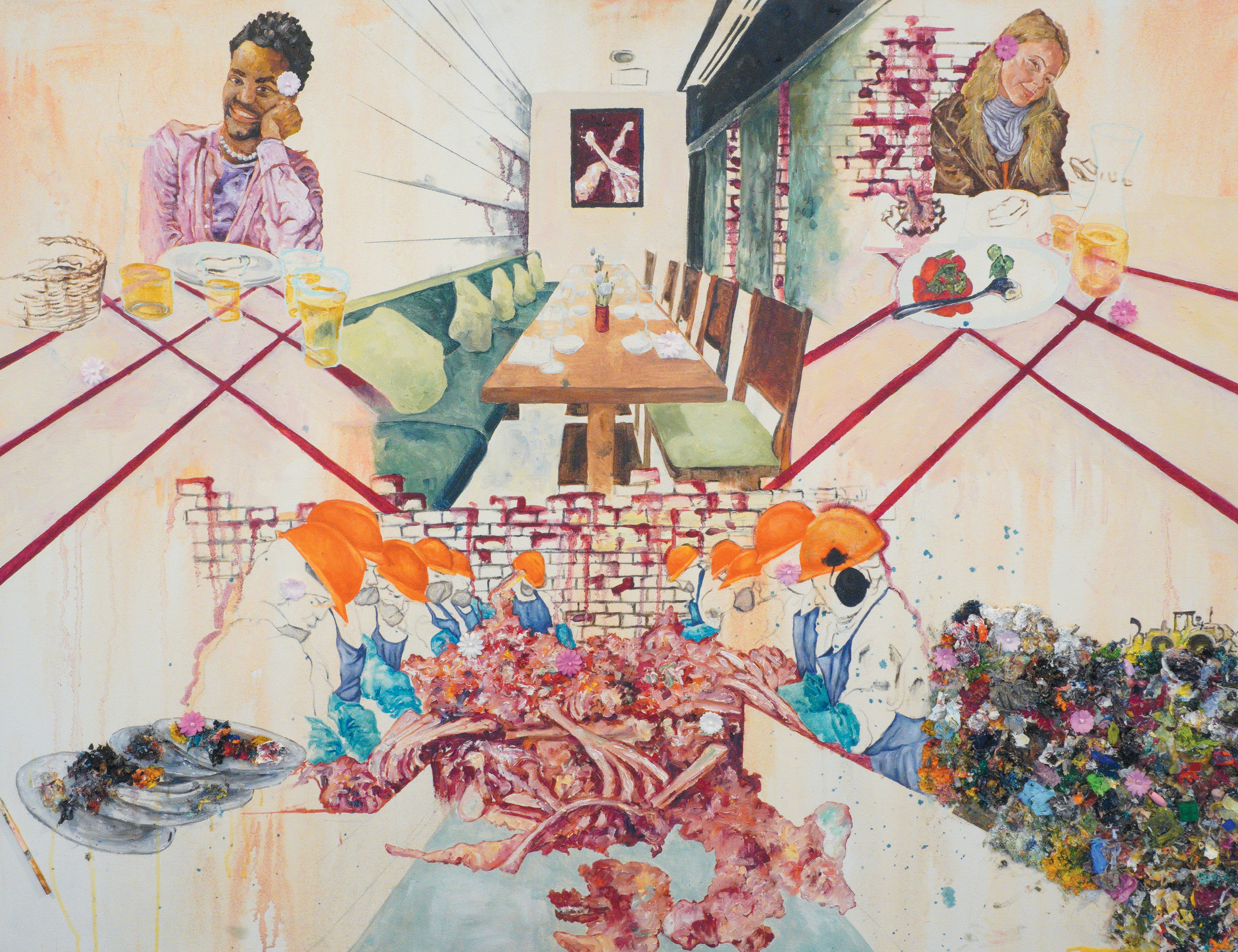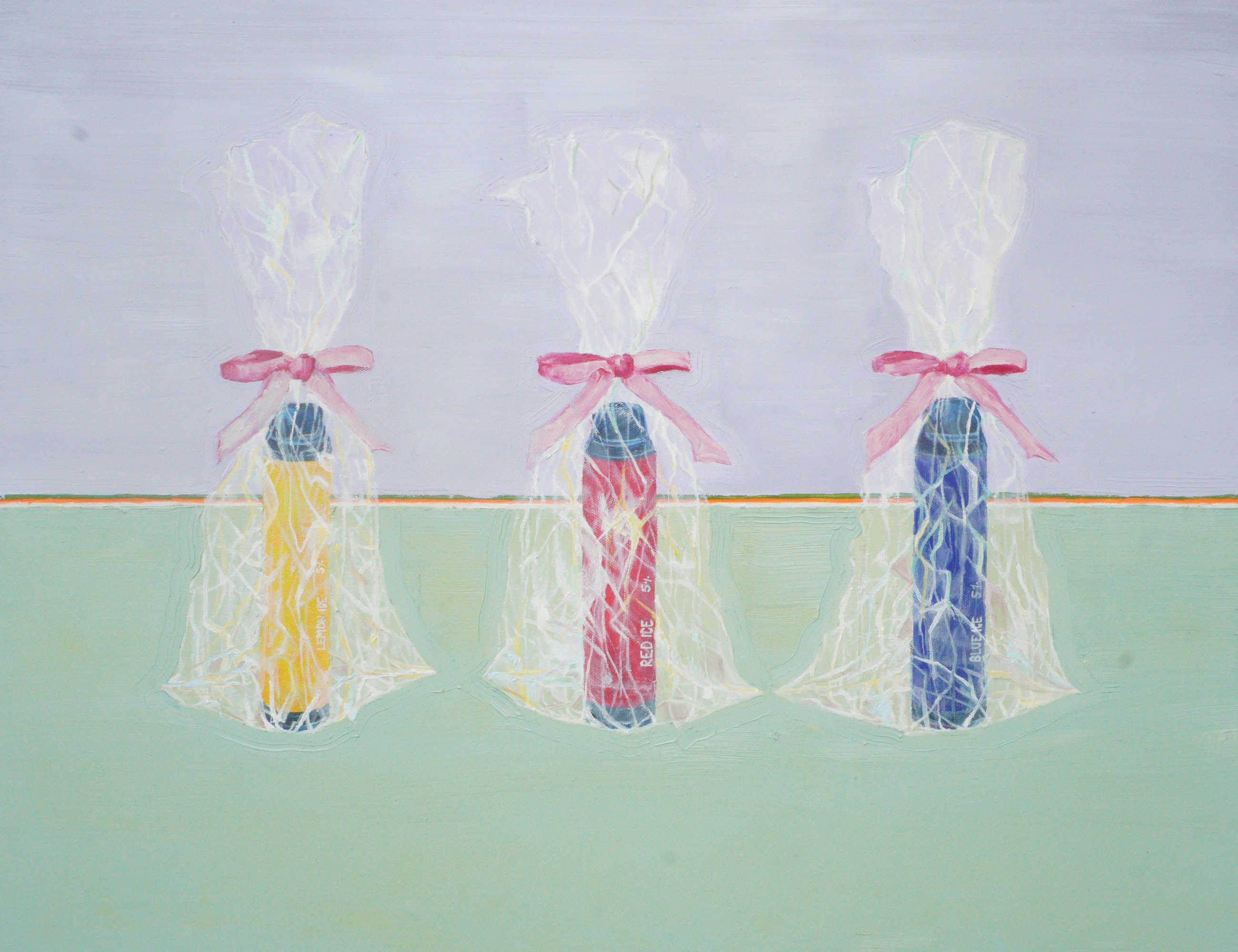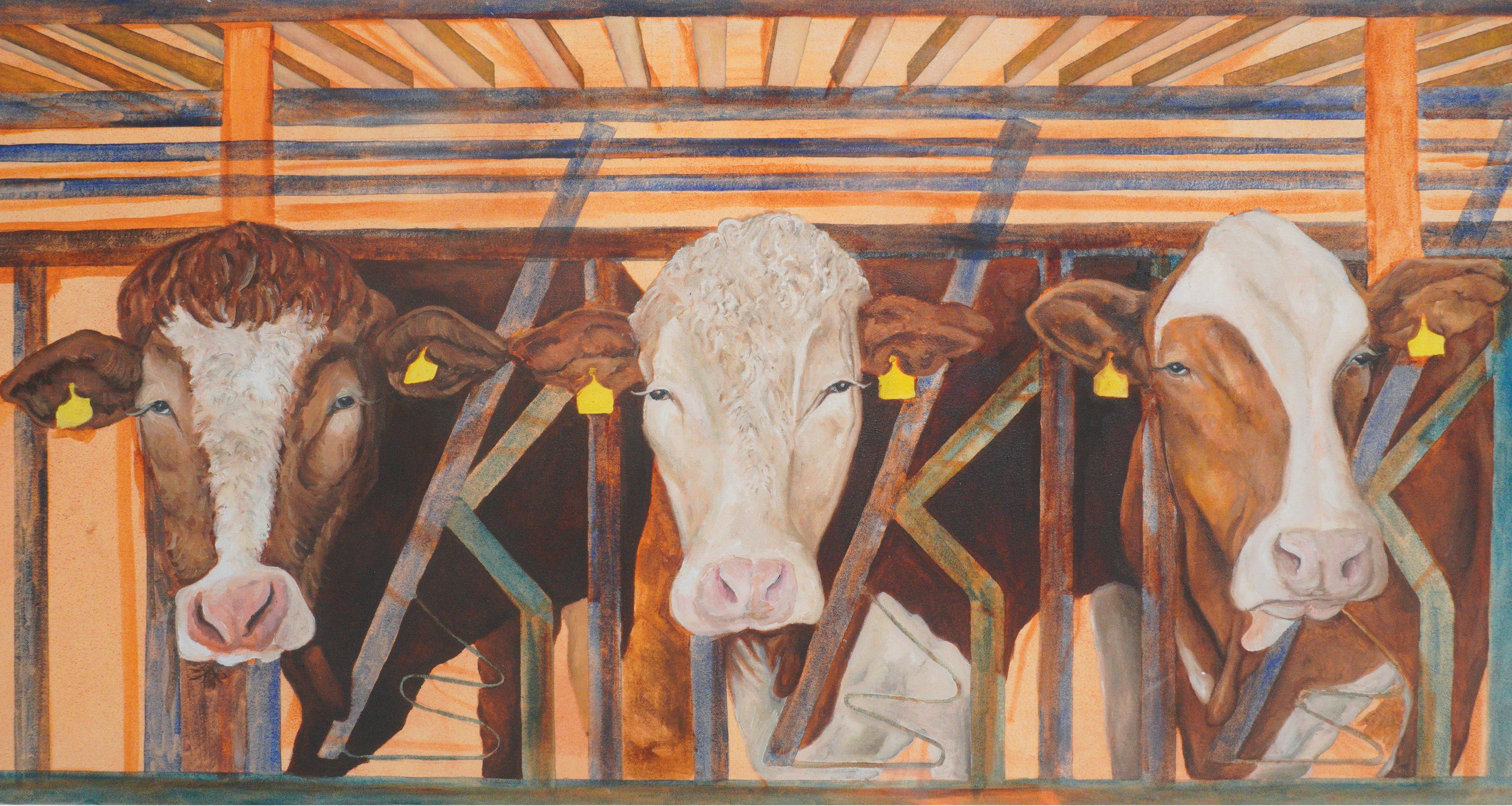Art of Consumption
Ames Prize-winner Ciara McNamara ’24 exposes the spectacle of America’s food system.
It was food that got Ciara McNamara ’24 into preschool. The budding artist remembers impressing the interviewers considering her for a spot at a school in her hometown of Brooklyn, New York, by describing an elaborate make-believe pizza.
“I confidently explained it contained all the meats and vegetables I could list in my 4-year-old brain,” she says.
McNamara, who double majored in studio art and psychology and minored in English at Conn, says she has always been fascinated by food. But it was while studying abroad in Rome in the spring of 2023—“eating her way through Europe,” finding new artistic inspiration and reckoning with the ethics and impact of her own meat consumption—that she decided to devote her senior year to diving deep into hyper-consumerism, food politics and waste in the United States.
“I felt flooded with ideas on how I could express food in my artwork,” she says.
The result, “The Spectacle of Consumption: I’m Lovin’ It,” is a multi-dimensional thesis featuring three collections of paintings, a series of pen-and-ink drawings, a found-object sculpture, an installation, and a 70-page written and illustrated component grappling with greed, corruption and crisis on a global scale.
“Simply put, there’s a lot of work and it is excellent,” says Associate Professor of Art and Art Department Chair Chris Barnard, who served as McNamara’s thesis adviser.
“Ciara’s combination of legible imagery and material experimentation packs a visceral punch and engages all viewers. The work is accessible, yet challenging without any contextual knowledge, and this is what I find to be its greatest strength. It does not tell viewers what to think, but engages—and at times, provokes—viewers, encouraging them to look more closely and reflect on what arises for them.”
McNamara’s artwork, including an installation that combined audio, visuals and scent to fully immerse the viewer in the production chain of a McDonald’s Big Mac, was on display as part of the Senior Art Major Thesis Exhibition in May in Conn’s Cummings Arts Center. It impressed the faculty committee charged with selecting the best thesis of the year, and McNamara was awarded the 2024 Oakes and Louise Ames Prize for most outstanding honors study at Conn’s 106th Commencement on May 19.
“Ciara’s work evidences high technical achievement and a great deal of experimentation,” Dean of the Faculty Danielle Egan said during the award presentation.
“While themes and influences overlap throughout, individual pieces reference specific artists and subject matter, further situating Ciara’s work within today’s contemporary art discourse.”
Now based in Brooklyn, McNamara is focused on launching her career in the art world. Two of her “Spectacle” works, Farm, Fast, Factory, Fresh and Vapes for Teens, were recently featured in the “Untitled Summer” exhibition at Chelsea Walls Gallery in Manhattan, and she plans to continue to specialize in art that addresses critical environmental issues.
“Shifting away from the food industry and hyper-consumerism would be impossible now ... I feel as though I have but dipped the very ends of my toes into the frightening yet compelling murky waters,” she says. “My senior project serves as a forward, or introduction, to the path of future research and artwork collections. I have planted the seeds that will continue to grow.”
Captions adapted from “The Spectacle of Consumption: I’m Lovin’ It” by Ciara McNamara ’24



